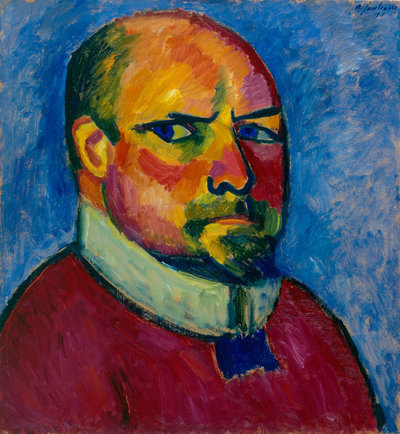Artist Friendships
dal 4/8/2011 al 15/10/2011
Segnalato da
4/8/2011
Artist Friendships
Kunstmuseum Basel, Basel
Karl Im Obersteg in conversation with Amiet, Chagall and Jawlensky. This integral overview at the Im Obersteg Foundation focuses on Karl Im Obersteg's artist friendships. It presents some 100 paintings, drawings and bronze sculptures, as well as a large selection of letters from the Foundation's collection. A particularly moving example are Alexej von Jawlensky's letters which repeatedly allude to his great suffering from an incurable rheumatic illness that caused him to live in seclusion, suffering paralysis, and eventually brought about his death.

Curated by Henriette Mentha
This integral overview at the Im Obersteg Foundation focuses on Karl Im Obersteg's
artist friendships. It presents some 100 paintings, drawings and bronze sculptures, as
well as a large selection of letters from the Foundation's collection.
It all began in Ticino, southern Switzerland, in 1919: Karl Im Obersteg, a young haulage
contractor from Basel, was recovering from the Spanish flu as Eastern European artists were
finding refuge in Switzerland. They all headed for the small town of Ascona whose southern
climate and Italian ambiance attracted many artists and intellectuals. As several hundred
letters testify, Im Obersteg's casual encounters with artists grew into friendships. While some
correspondence was business-related, many letters reflect the artists' intensifying personal
relationships with the collector. A particularly moving example are Alexej von Jawlensky's
letters which repeatedly allude to his great suffering from an incurable rheumatic illness that
caused him to live in seclusion, suffering paralysis, and eventually brought about his death.
Unique for Switzerland, Karl Im Obersteg's friendship with Jawlensky enabled him to collect
over 30 pieces spanning the painter's various periods.
Im Obersteg's copious correspondence with Cuno Amiet, Robert Genin, Marc Chagall,
Alexej von Jawlensky and others illustrates how his collection grew, and re-creates the spirit
of the period from 1920 until 1950. Events during and between the two World Wars were
decisive for European art. Many artists banned in their home countries found refuge and
were able to make a living in neutral Switzerland, where individuals such as Im Obersteg
were able to provide them with the necessary support. The economy of a country unscathed
by the war also meant that private collectors were able to avail themselves of unique
opportunities to buy high-quality art.
The collector's letters exchanged with Marc Chagall not only describe the fascinating history
of how five of Chagall's early works came to be purchased by the collector, but also
demonstrate his connoisseurship. Irritated by the discovery of literary references alluding to
a second version of Jew in Black and White, Im Obersteg demanded clarification. The letters
prove that the painting in the Im Obersteg Collection is the original work created by Chagall
in Witebsk in 1914, which served as a model for two further versions created in Paris in the
1920s. Im Obersteg was one of Chagall's early collectors and promotors, and a close
personal friend.
The exhibition illustrates the fact that the Im Obersteg Collection is the result of personal
friendships with artists and art dealers rather than of anonymous purchases through galleries
and auction houses – a fact that makes this one of Switzerland's great, organic art
collections, and part of the country's cultural heritage.
The exhibition is accompanied by a publication (in German), "Sie lieber Herr Im Obersteg
sind unser Schweizer für alles". Briefwechsel mit Amiet, Chagall, Genin, Jawlensky,
Kandinsky, Kirchner und Sacharoff in der Sammlung Im Obersteg, edited by the Im
Obersteg Foundation, Schwabe-Verlag, Basel 2011.
For press pictures and further information:
Kunstmuseum Basel, Christian Selz
St. Alban-Graben 8, CH–4010 Basel
pressoffice@kunstmuseumbasel.ch
Image: Alexej von Jawlensky (1864-1941), Selbstbildnis, 1911
Öl auf leinenstrukturiertem Malkarton
Masse: 54 x 51 cm
Stiftung im Obersteg
Depositum Im Kunstmuseum Basel
Opening 5th August 2011
Kunstmuseum Basel
St. Alban-Graben 16, CH-4010 Basel
Opening Hours: Tue - Sun 10 a.m. - 6 p.m.
closed on Monday



